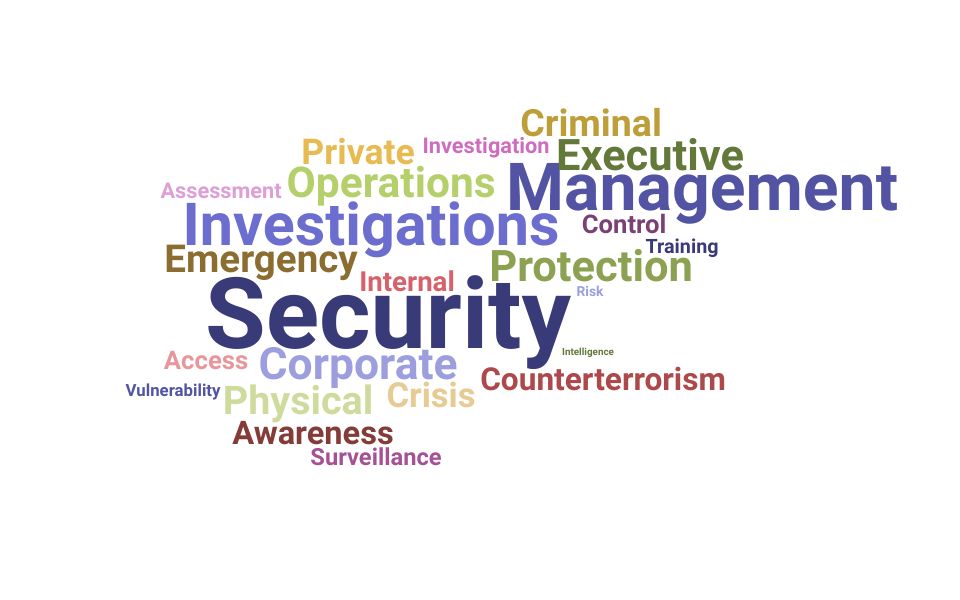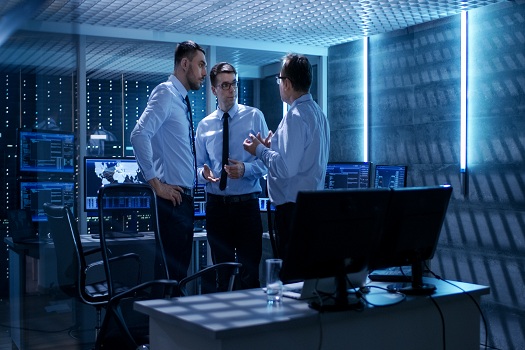Enhance Corporate Security: Strategies for a Robust Defense
Enhance Corporate Security: Strategies for a Robust Defense
Blog Article
From Cybersecurity to Physical Actions: Enhancing Company Security in a Changing World
In today's swiftly advancing electronic landscape, the importance of business safety and security can not be overemphasized. As cyber risks come to be common and increasingly advanced, organizations must go past typical cybersecurity procedures to protect their procedures and assets - corporate security. This is where the combination of physical safety steps comes to be vital. By incorporating the toughness of both cybersecurity and physical safety, firms can create a comprehensive defense technique that resolves the diverse range of risks they encounter. In this discussion, we will certainly check out the changing risk landscape, the need to incorporate cybersecurity and physical safety and security, the execution of multi-factor verification measures, the significance of worker recognition and training, and the adjustment of security measures for remote workforces. By analyzing these essential areas, we will certainly obtain beneficial understandings right into just how companies can reinforce their company protection in an ever-changing globe.
Understanding the Changing Danger Landscape
The evolving nature of the contemporary globe demands an extensive understanding of the transforming threat landscape for efficient company safety. It is critical for organizations to stay notified and adjust their security measures to deal with these progressing risks.
One secret element of comprehending the altering risk landscape is acknowledging the different types of threats that organizations encounter. In addition, physical hazards such as burglary, vandalism, and corporate espionage continue to be widespread problems for services.
Tracking and evaluating the risk landscape is vital in order to determine prospective dangers and vulnerabilities. This involves remaining updated on the newest cybersecurity trends, evaluating threat knowledge reports, and conducting normal danger assessments. By recognizing the transforming risk landscape, companies can proactively execute appropriate safety and security procedures to mitigate risks and shield their possessions, credibility, and stakeholders.
Integrating Cybersecurity and Physical Security
Incorporating cybersecurity and physical safety and security is crucial for thorough business defense in today's electronic and interconnected landscape. As organizations increasingly rely upon technology and interconnected systems, the limits between physical and cyber dangers are becoming obscured. To effectively secure against these dangers, a holistic method that combines both cybersecurity and physical safety and security actions is necessary.
Cybersecurity focuses on securing electronic assets, such as systems, information, and networks, from unapproved accessibility, disruption, and burglary. Physical protection, on the other hand, includes procedures to secure physical assets, individuals, and centers from vulnerabilities and dangers. By incorporating these two domains, organizations can attend to susceptabilities and hazards from both digital and physical angles, thus improving their total security posture.
The integration of these 2 techniques permits for an extra thorough understanding of security threats and enables a unified reaction to occurrences. For instance, physical accessibility controls can be boosted by incorporating them with cybersecurity methods, such as two-factor authentication or biometric identification. Cybersecurity steps can be complemented by physical safety and security steps, such as surveillance video cameras, alarms, and secure accessibility factors.

Executing Multi-Factor Verification Steps
As companies significantly prioritize detailed security steps, one effective strategy is the application of multi-factor verification procedures. Multi-factor verification (MFA) is a safety and security approach that requires users to supply numerous forms of identification to access a system or application. This technique includes an added layer of protection by combining something the individual recognizes, such as a password, with something they have, like a safety and security or a finger print token.
By applying MFA, companies can significantly enhance their safety stance - corporate security. Traditional password-based authentication has its restrictions, as passwords can be conveniently compromised or forgotten. MFA reduces these dangers by adding an extra verification aspect, making it harder for unapproved people to get to delicate info
There are a number of sorts of multi-factor authentication methods available, including biometric verification, SMS-based confirmation codes, and equipment symbols. Organizations need to evaluate their specific requirements and pick one of the most ideal MFA solution for their demands.
Nonetheless, the execution of MFA need to be very carefully intended and implemented. It is vital to strike an equilibrium between safety and security and usability to avoid customer stress and resistance. Organizations needs to additionally consider prospective compatibility issues and supply appropriate training and support to guarantee a smooth shift.
Enhancing Employee Recognition and Training
To reinforce company security, organizations have to prioritize improving staff member recognition and training. Many safety violations occur due to human error or lack of recognition.
Effective staff member awareness and training programs must cover a wide range of subjects, consisting of data protection, phishing attacks, social design, password hygiene, and physical safety and security measures. These programs should be tailored to the particular requirements and obligations of different worker roles within the company. Normal training workshops, simulations, and sessions can help staff members create the required abilities and knowledge to react and recognize to security threats effectively.
Moreover, companies must motivate a culture of protection understanding and provide recurring updates and tips to keep staff members notified about the current risks and mitigation methods. This can be done through inner communication networks, such as newsletters, intranet portals, and e-mail projects. By promoting a security-conscious labor force, organizations can significantly lower the possibility of security occurrences and protect their valuable properties from unapproved gain access to or compromise.

Adapting Safety And Security Measures for Remote Workforce
Adjusting company security steps to fit a remote labor force is crucial in ensuring the security of sensitive info and possessions (corporate security). With the boosting fad of remote job, companies have to implement appropriate safety and security steps to reduce the dangers connected with this new method of working
One vital facet of adjusting safety procedures for remote job is developing safe interaction channels. site Encrypted messaging platforms and online personal networks (VPNs) can help safeguard sensitive info and avoid unauthorized access. Additionally, companies need to apply the usage of strong passwords and multi-factor authentication to enhance the protection of remote accessibility.
One more essential consideration is the execution of safe remote gain access to services. This involves supplying workers with secure accessibility to business resources and information through digital desktop infrastructure (VDI), remote desktop computer procedures (RDP), or cloud-based solutions. These modern technologies make sure that sensitive information remains protected while allowing staff members to do their roles properly.

Finally, detailed security awareness training is vital for remote staff members. Educating sessions should cover finest methods for safely accessing and taking care of visite site delicate information, determining and reporting phishing efforts, and keeping the total cybersecurity health.
Verdict
In final thought, as the hazard landscape remains to advance, it is crucial for organizations to strengthen their safety and security determines both in the cyber and physical domains. Integrating cybersecurity and physical safety and security, executing multi-factor authentication measures, and enhancing employee recognition and training are essential actions in the direction of attaining durable business safety and security. Additionally, adjusting protection actions to suit remote labor forces is imperative in today's changing globe. By carrying out these procedures, organizations can mitigate threats and shield their useful possessions from potential threats.
In this discussion, we will certainly explore the transforming risk landscape, the demand to integrate cybersecurity and physical security, the execution of multi-factor authentication procedures, the significance of staff member awareness and training, and the adjustment of security procedures for remote labor forces. Cybersecurity steps can be enhanced by physical safety and security procedures, such as surveillance cams, alarm systems, and protected accessibility points.
As companies progressively focus on comprehensive safety actions, one effective technique is the execution of multi-factor authentication steps.In verdict, as the threat landscape continues to progress, it is critical for organizations to strengthen their safety gauges both More about the author in the cyber and physical domain names. Integrating cybersecurity and physical safety and security, carrying out multi-factor verification actions, and enhancing employee understanding and training are necessary actions in the direction of achieving robust corporate safety and security.
Report this page